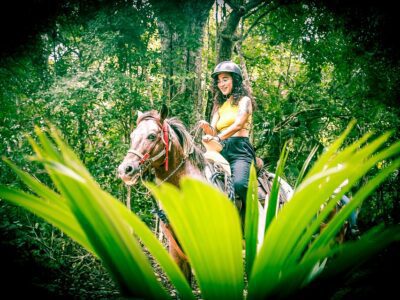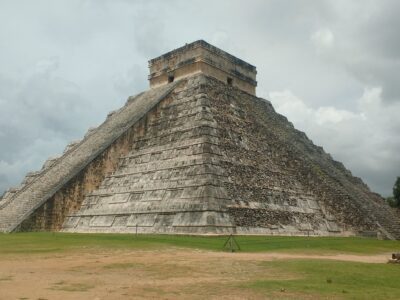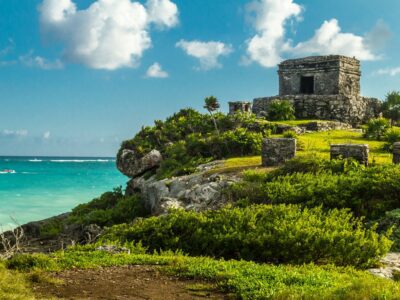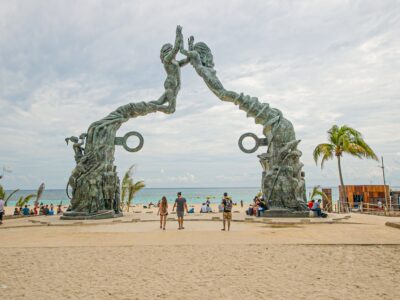The community of Chikindzonot, located in eastern Yucatán, Mexico, preserves an ancestral tradition known as the Dance of “Los Señores” (The Lords) or “Los Pastores” (The Shepherds). This cultural manifestation, which fuses elements of the Catholic religion and pre-Hispanic practices, takes place during the Christmas festivities and is deeply rooted in the identity of its inhabitants.
The dance represents the protection of the Child God against the forces of evil, personified by “Kisín” (the devil). The participants, dressed in masks that symbolize good and evil, walk through the streets of the town dancing and scaring children, in a performance that dates back to the 1600s.
Very little is known about the origin of this dance, however, many researchers agree that it arose as a result of the evangelization of the eastern area of Yucatan, it probably dates back to the 17th century.
A distinctive feature of this tradition in Chikindzonot is the offering of corn, known locally as “holy grace”. The dancers, called “The Lords of the Dance”, receive the corn from the residents and classify it as “holy gold” if it is yellow or “holy silver” if it is white. This offering, which is equated to gold or silver, reflects the importance of corn in local culture and its connection with agricultural rites.
The celebration takes place in several key moments. On January 5, during the “Alto del Niño Dios” ritual, a collection of offerings begins that lasts six days. The dancers, accompanied by the image of the Baby Jesus on an altar decorated with flowers, visit the houses of the town requesting bonuses in exchange for their dances.
The main offerings include candles, cash, and corn. This tour, which is carried out without the intervention of ecclesiastical or civil authorities, is organized by local farmers, who administer the offerings received. The collected corn is taken to the church, where it is sold to obtain funds for the maintenance of the temple and the needs of the image of the Child Jesus.
Music plays a fundamental role in dance. Traditional musicians use instruments such as harmonica, rooster-shaped whistles, wooden rattles, güiro, drums, and cowbell.
The pieces performed are usually a jarana, a cumbia, and a son de jaleo or “paywakax” (the little bull), which accompany the movements of the dancers. The “Lords” perform simple steps and basic tap movements, while the devil character performs more agile and graceful movements, dedicating himself to scaring the children who witness the dance. This tradition not only strengthens the cultural identity of Chikindzonot, but also promotes community cohesion and the transmission of ancestral values to new generations. The Dance of “The Lords” or “The Shepherds” is a living testimony of the cultural richness of Yucatan and the resistance of its people to keep their customs and beliefs alive.
By Roberto García Hidalgo for The Yucatan Times.
TYT Newsroom
The post The dance that protects Baby Jesus, a current tradition in rural Yucatán first appeared on The Yucatan Times.














